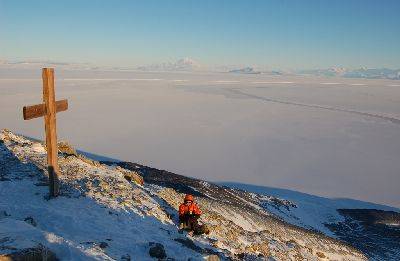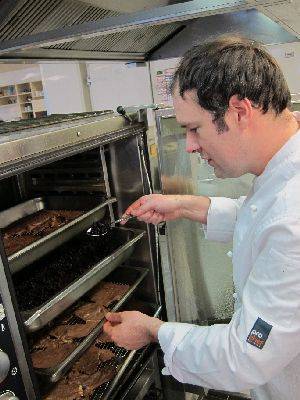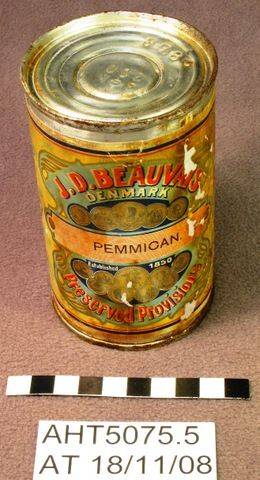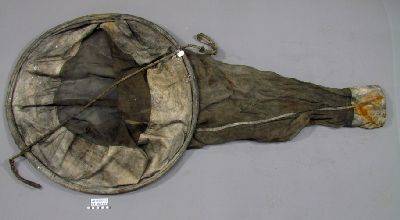Authors: Julie, Sarah, Martin, and guest bloggers
Date: 30/3/11
Temperature: -22
Wind Speed: 18
Temp with wind chill: -38
Sunrise: 08:47
Sunset 19:06
We are impressed by the quantity of poetry written by all those scientists and explorers, the early heroes of Antarctic exploration. Following in the footsteps of the giants of polar exploration, as the sun disappears, we too, write poetry.

Sunset © AHT/Jane
Disappearing Sun Haikus
Seems kind of dark out
That is one awesome sunrise
I need more coffee -- Julie
I’m completely lost
Why is it so dark out there
Where the heck am I? -- Sarah
Faulheit, wer weiss es
Vielleicht nur ein bisschen Ruhe
Wann kommst Du wieder? -- Martin
Orange blue orange
Blue orange blue orange blue
Orange blue orange – Anonymous Scott Base resident
As we spin along
The plane of the ecliptic
The earth hides the sun. – Anonymous Scott Base resident
Talk like a penguin
Roll like a cute baby seal
Look up and it’s dark -- Anonymous Scott Base resident
Hey look, our new friends!
Venus, Canopus, Rigel,
Alpha Centauri… -- Anonymous Scott Base resident
Farewell to the Sun
Ceaseless day is gone,
Farewell to the dusk and dawn
And the warmth and light.
Welcome never-ending night,
Sky, stars and the Moon…
A farce, a plight, doom and gloom?
Or just a magic,
A new fairytale to bloom…
The tale of the SUN,
The balance of Yin and Yang… -- Anonymous McMurdo Station Guest Poet
Sunset Sestina
That time of year again. Our round, most constant sun
Disintegrates in atmospheric ripples, green
and blue and red and yellow, paints new shadows, pours
itself into the blazing clouds, illuminates
the smallest ridges, gives an edge of glory now
to every passing step on this, our icy world.
This moment of our day is only that. The world's
adventure takes us farther into darkness; Sun
will vanish in mere days, a week at most. But now
there's wonder to be found in every bit of green
that shimmers. The projection that illuminates
our wall shows sunspots, smokes and quivers as it pours
into our lucky eyes. Can we say it pours
into our hearts as well? Why ever not? The world
is like that. We decide what sun illuminates
our hidden places; we decide to let this sun
be more than just a splotch of light, be growth and green
things, fruits and flowers, a riot of colors inside us now.
You can't assume we all are eager for this now.
“Stay, sun. Don't go, not yet!” we say, as daylight pours
away, swirls too swiftly down the drain. Green
flash? That's nifty, yes, but must it mean the world
is racing into night? Life without the sun?
A scary thought. Yet even fear illuminates
the inner landscape. We expect illumination
here, and grumble when it doesn't strike. But now
we must forget all that. The circling of the sun
reminds us that it's time to sleep. Our efforts pour
into another day of work: building worlds
from boxes big and small, harvesting the green-
house, gathering data, cleaning floors. Some are green
with envy, hearing of our lives. “Illuminate
us too,” they cry. “Tell us how it is. Our world
is so mundane.” A plan: next year we'll trade, not now.
Venus floats in the bright blue sky. The light that pours
upon the plains is glowing fragments of the sun.
We think about the world, the places filled with green,
the rocks, the friends, the sun; these threads illuminate
this frozen here, this now, across which sunset pours.
-- Victoria Grace Landgraf 2006



.jpg)

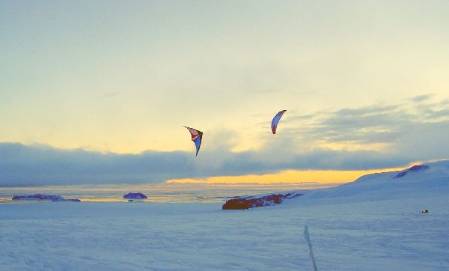
.jpg)

